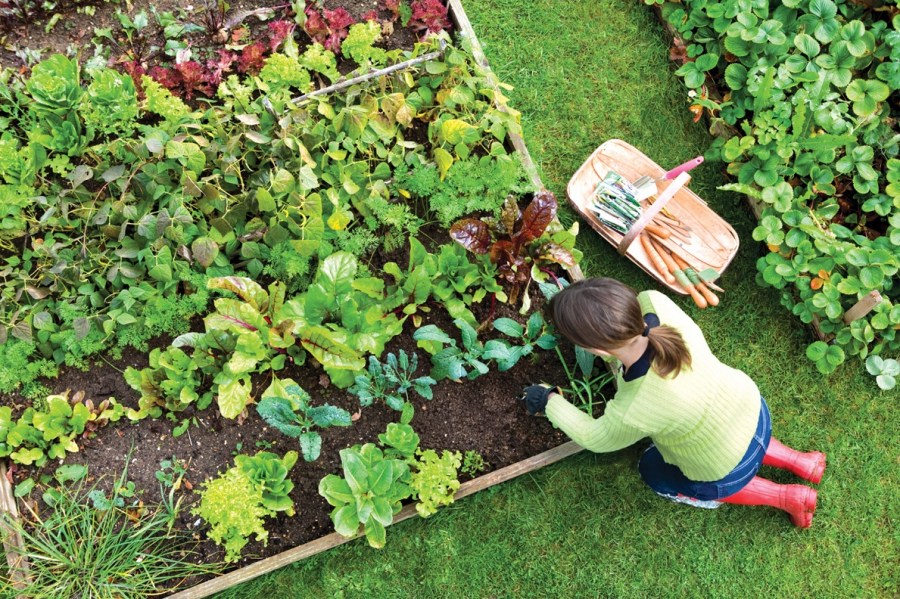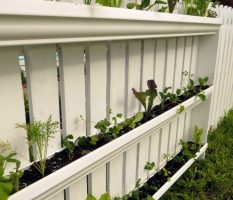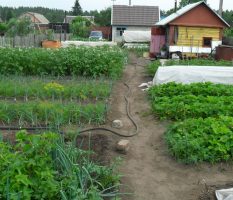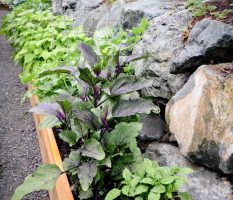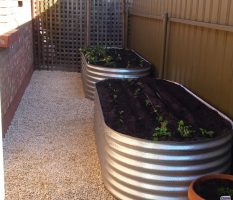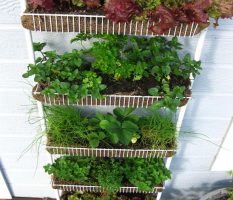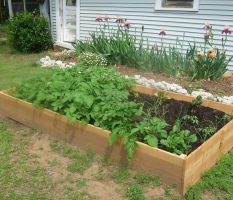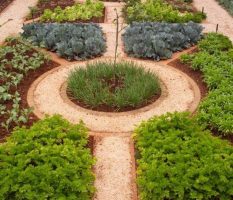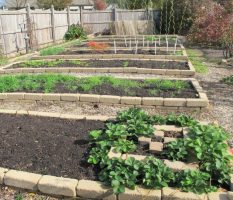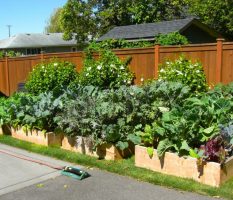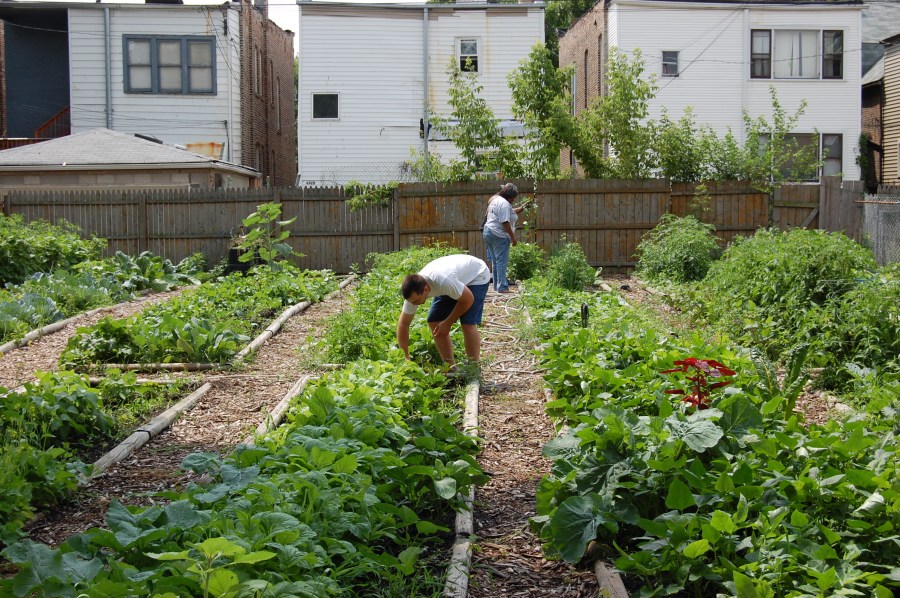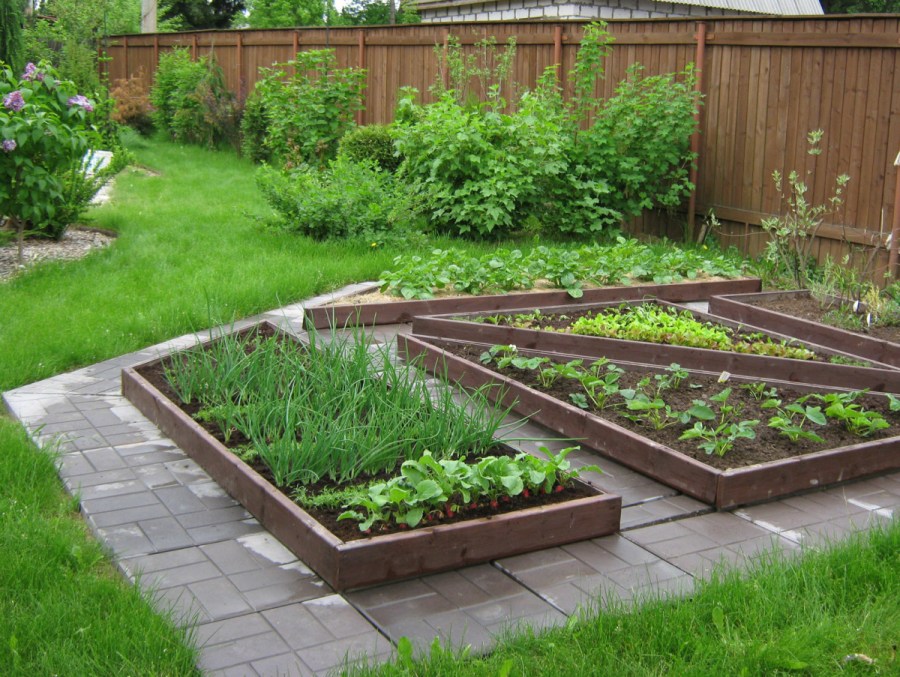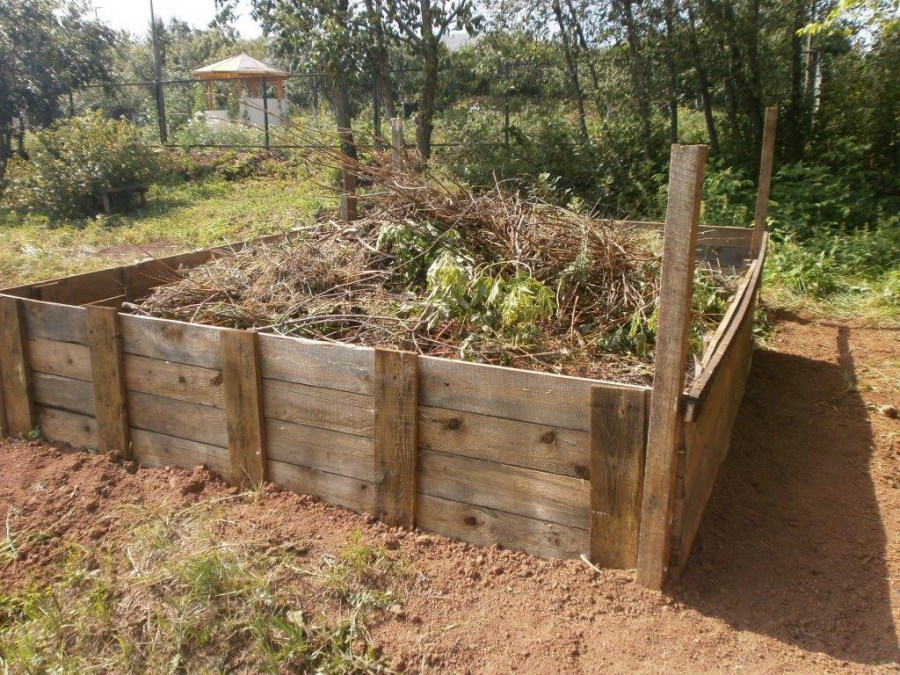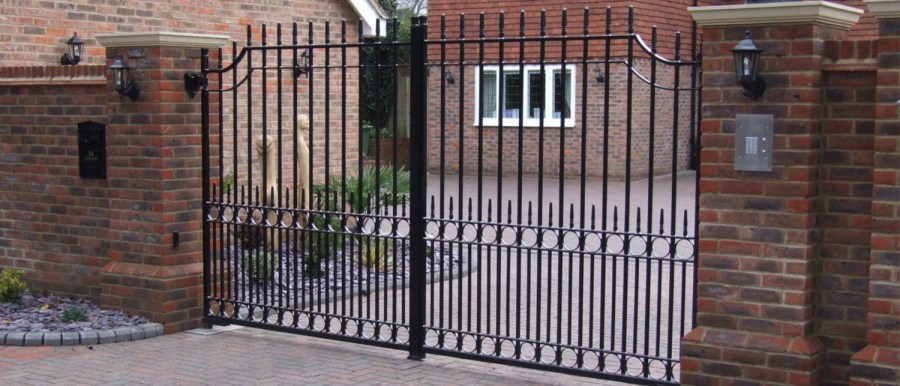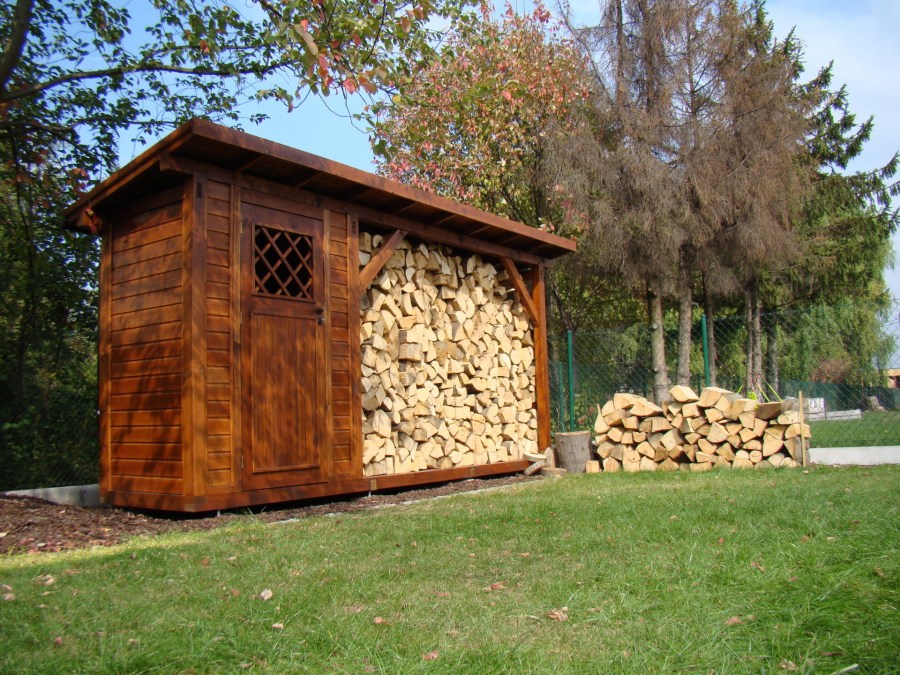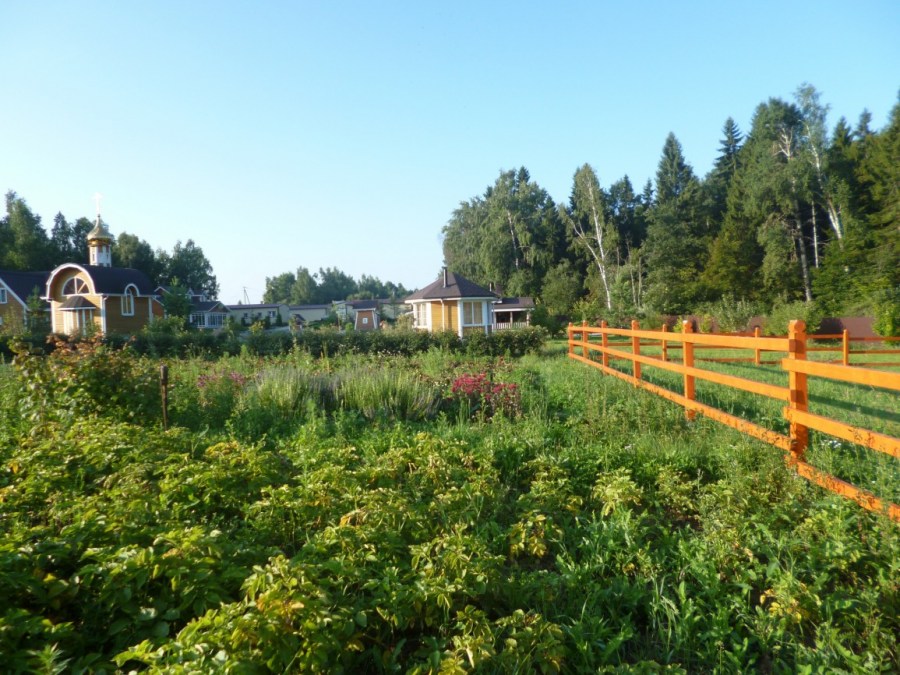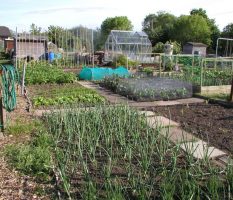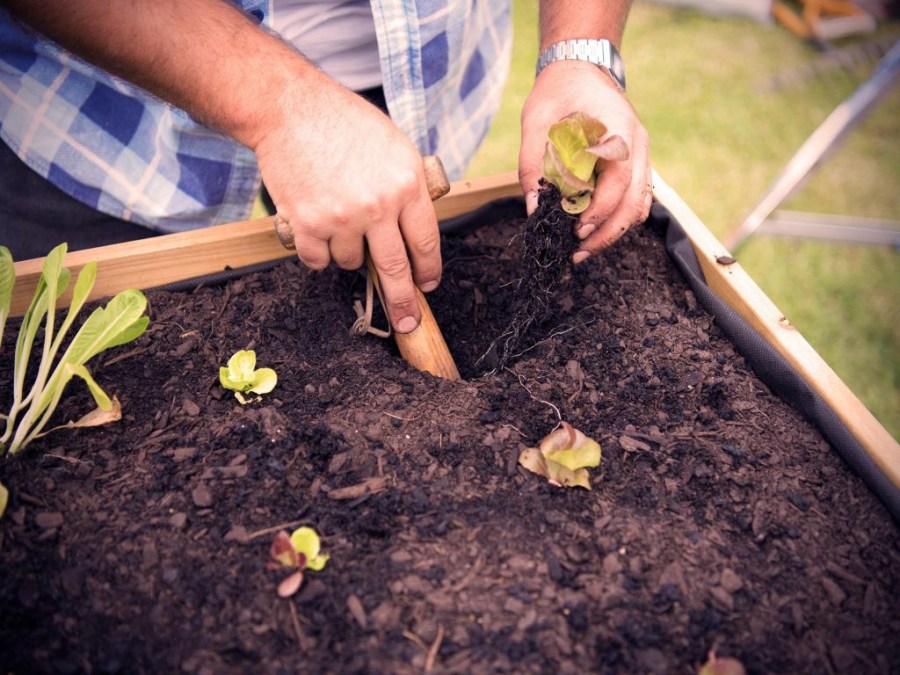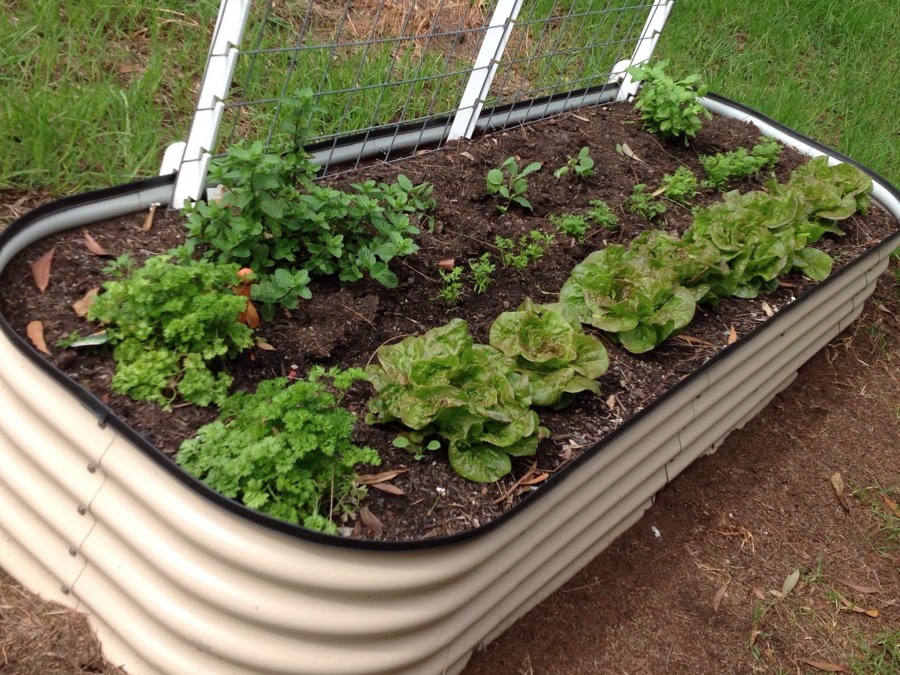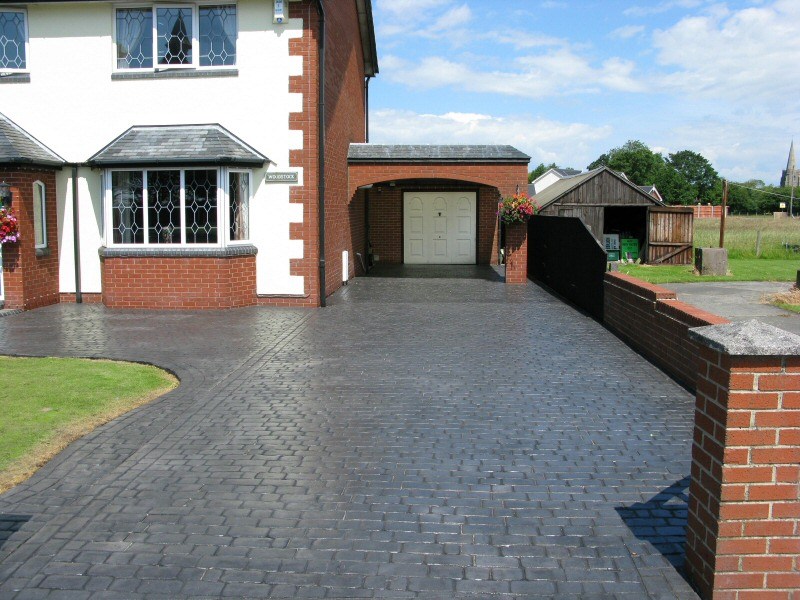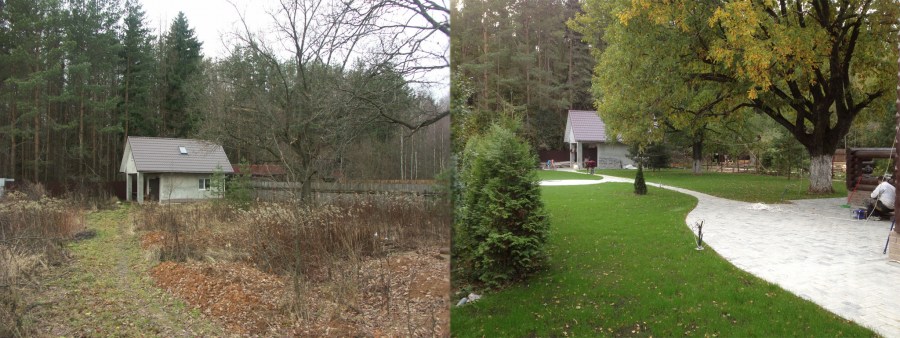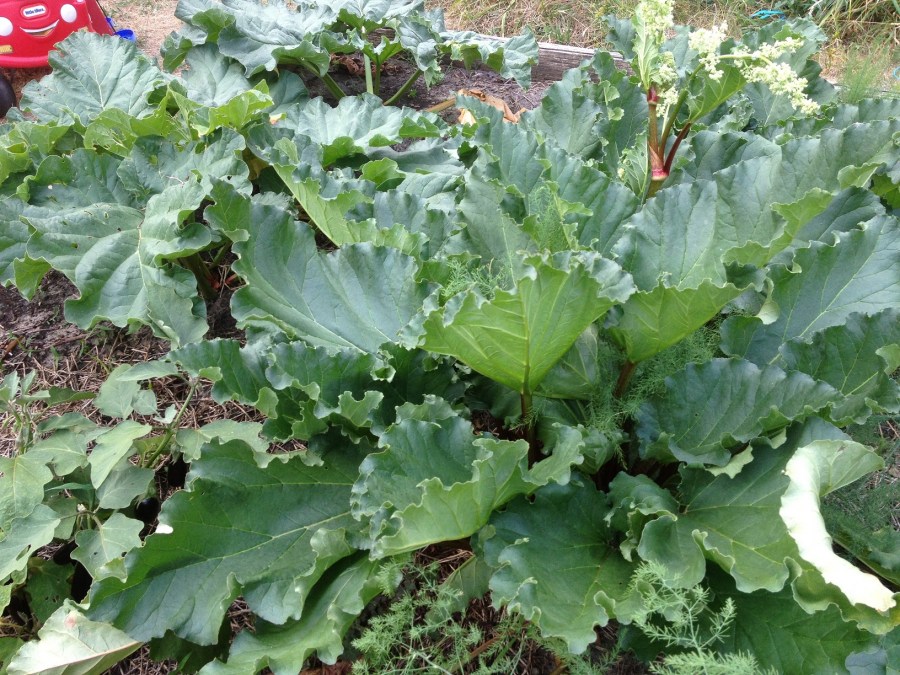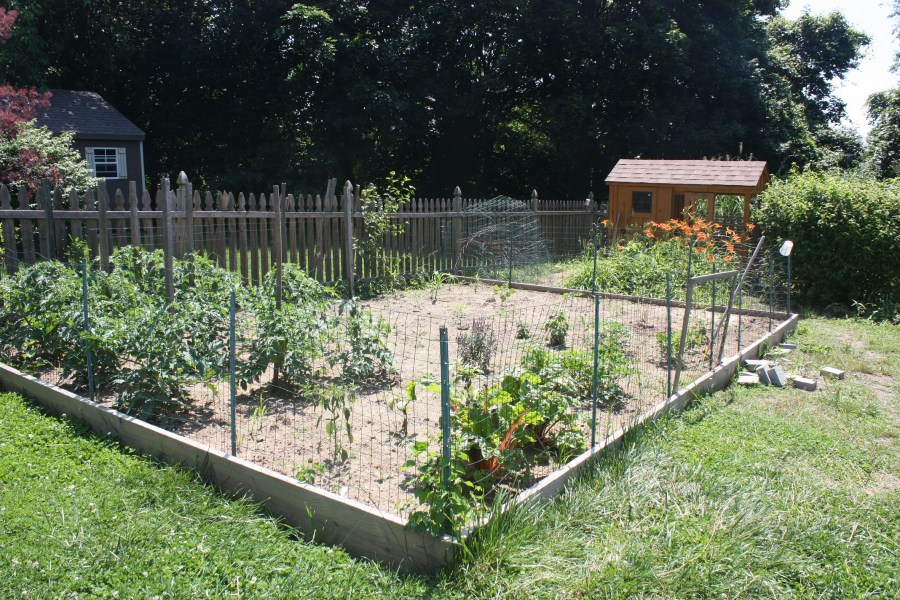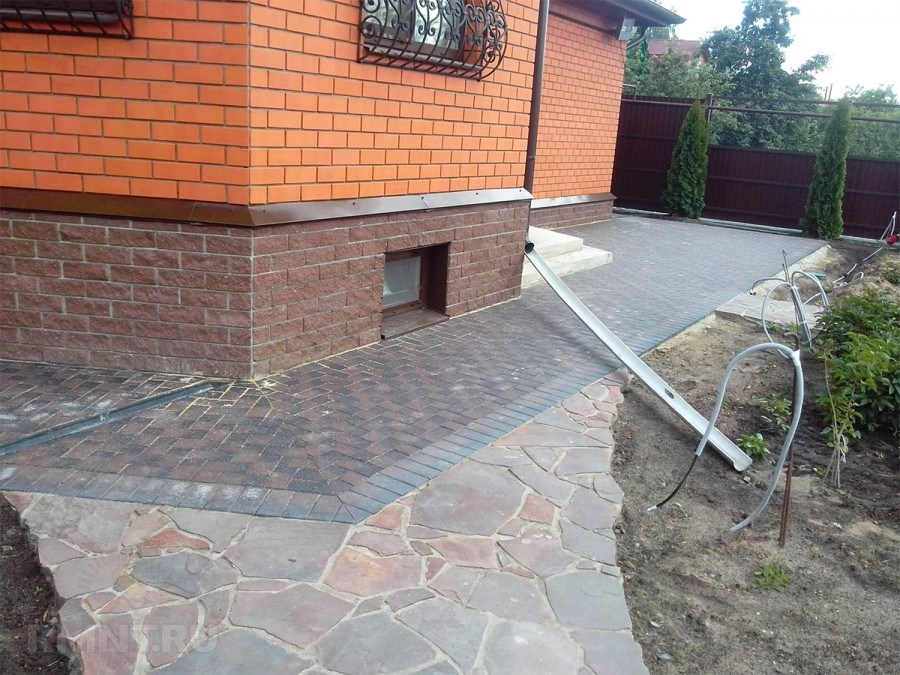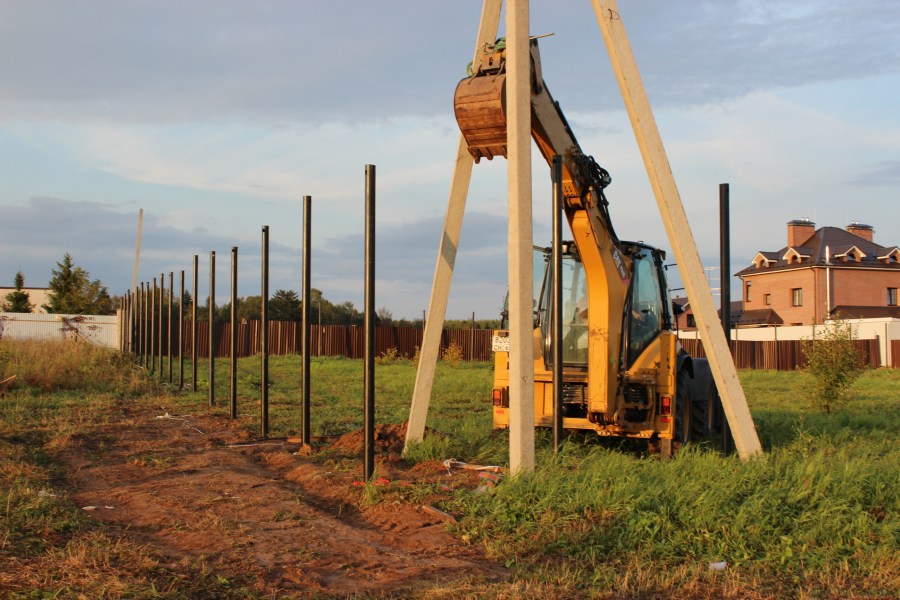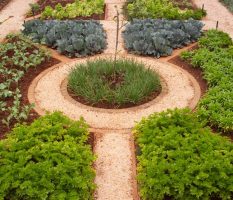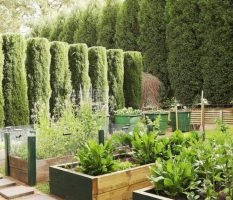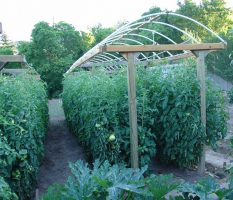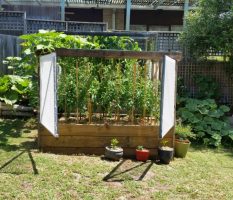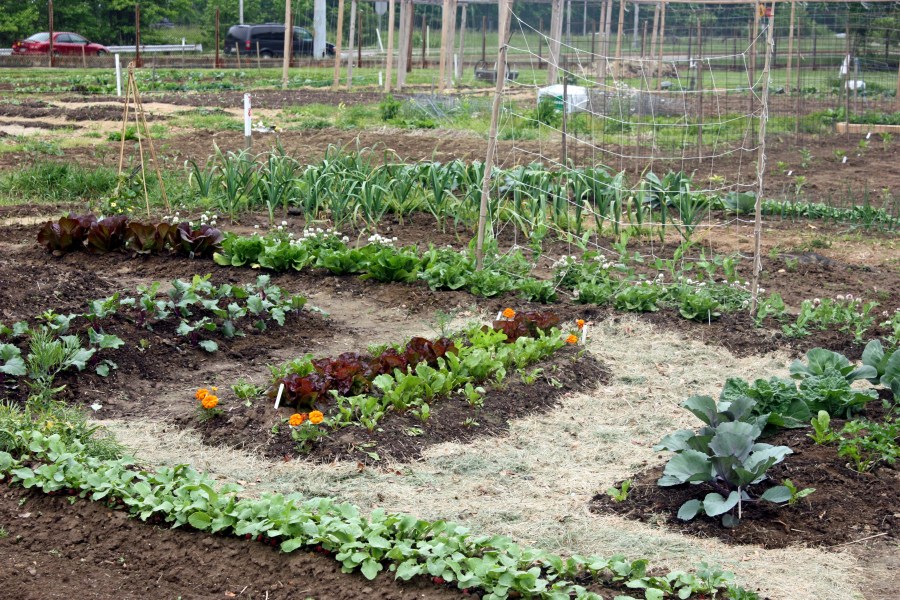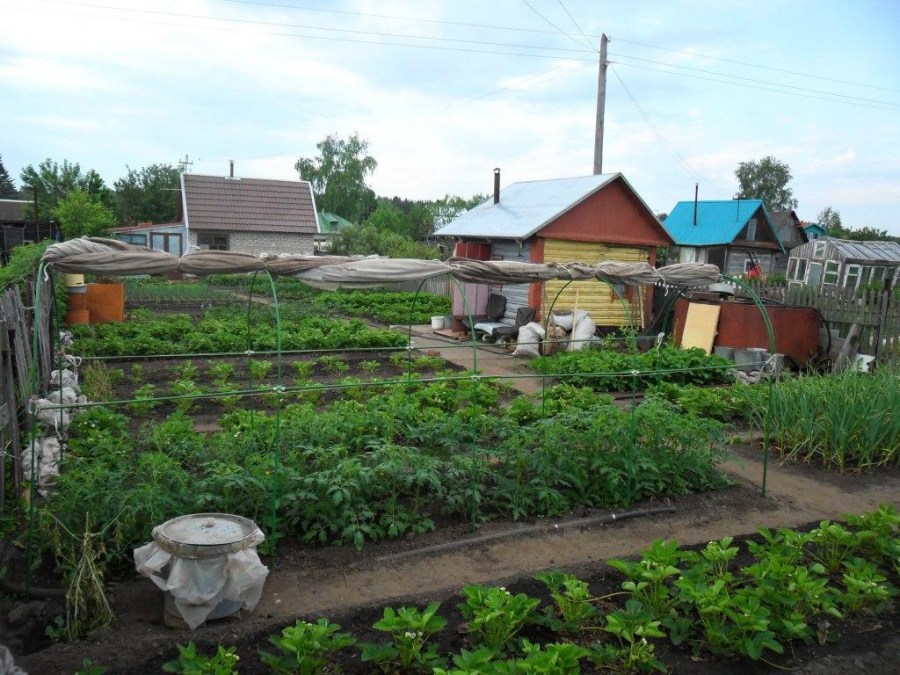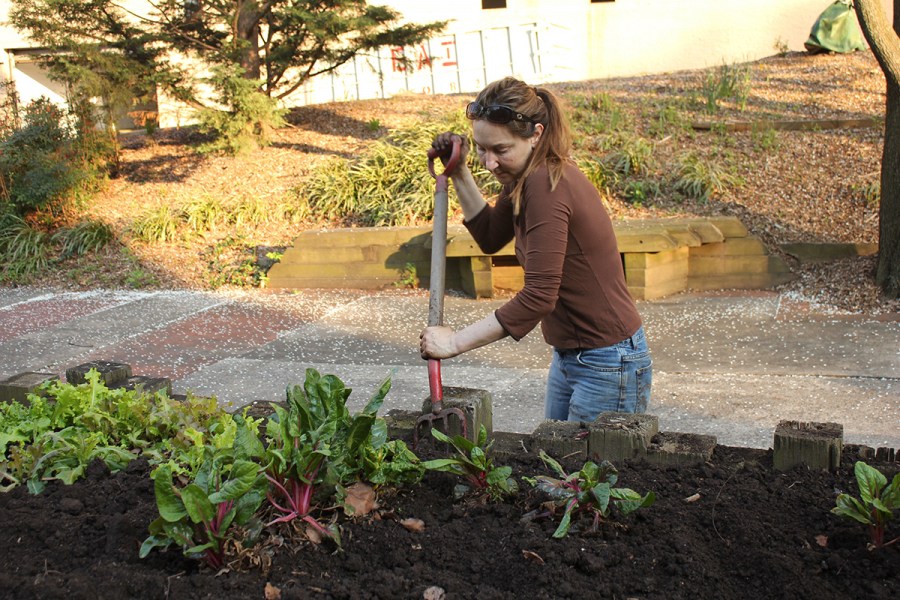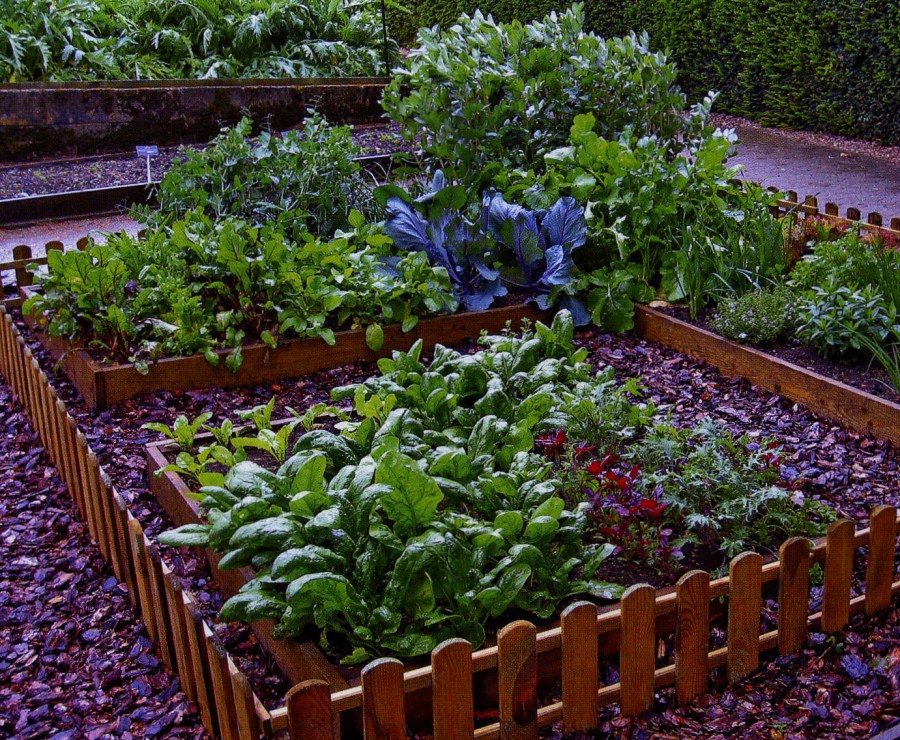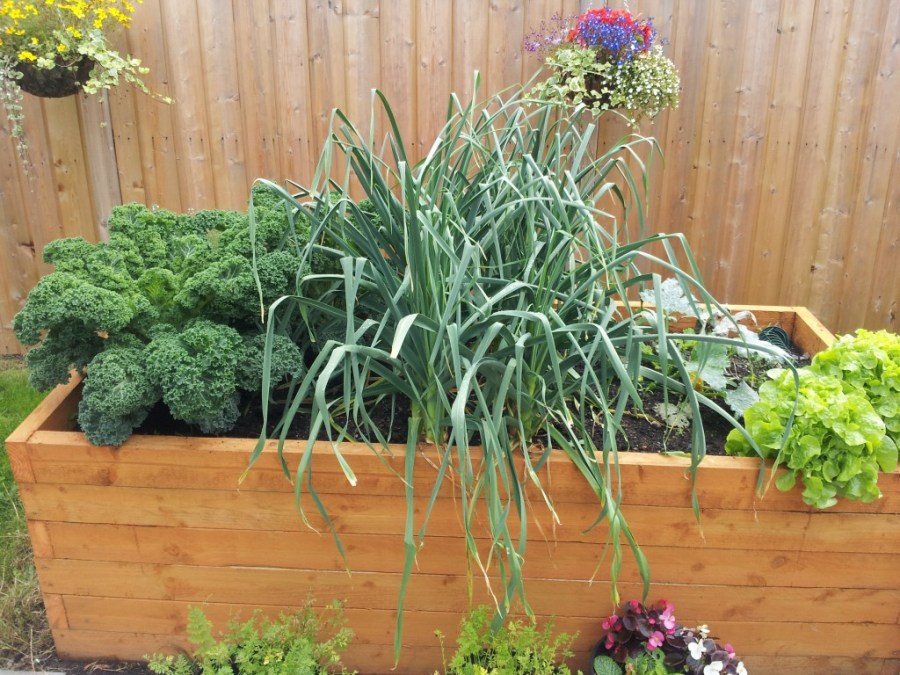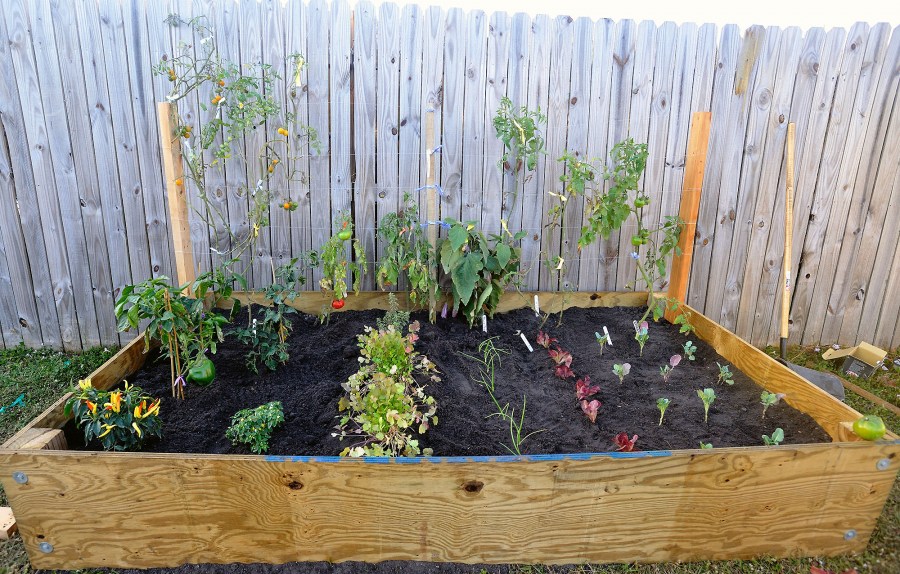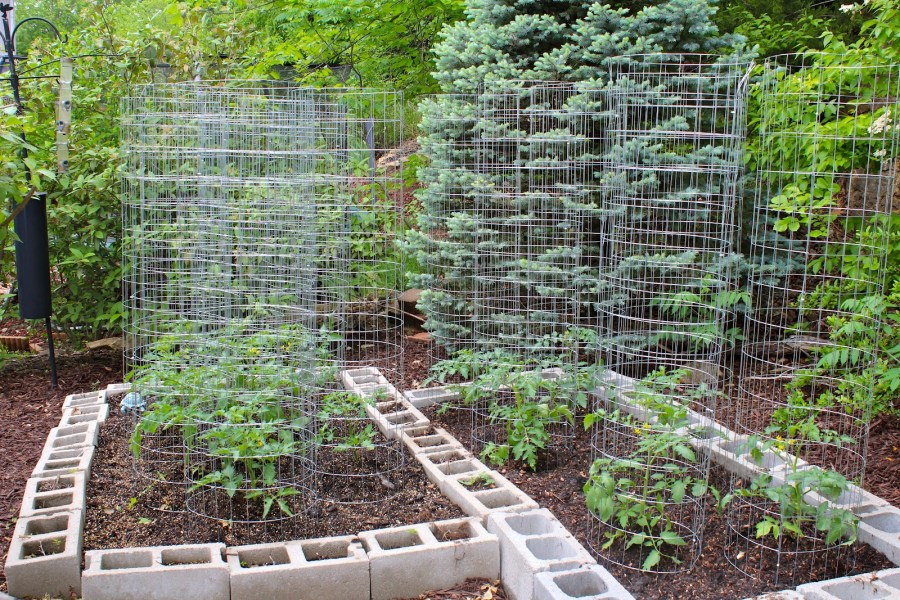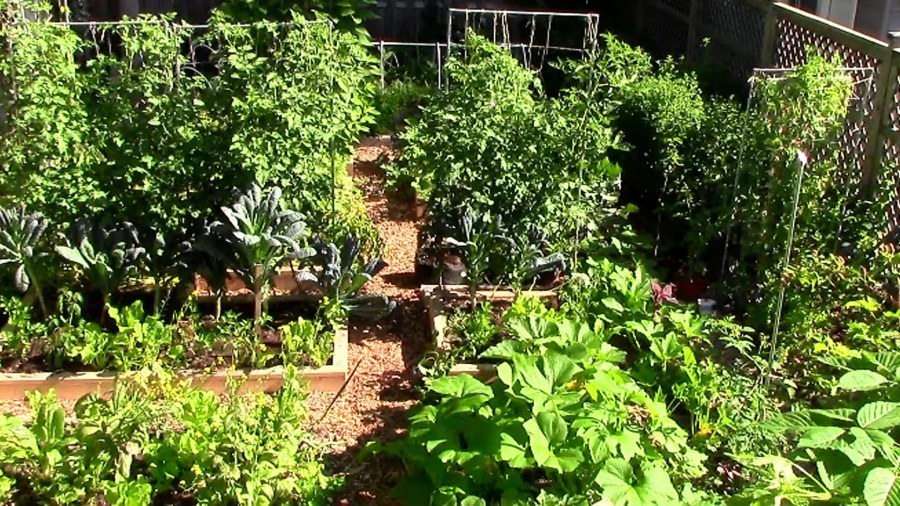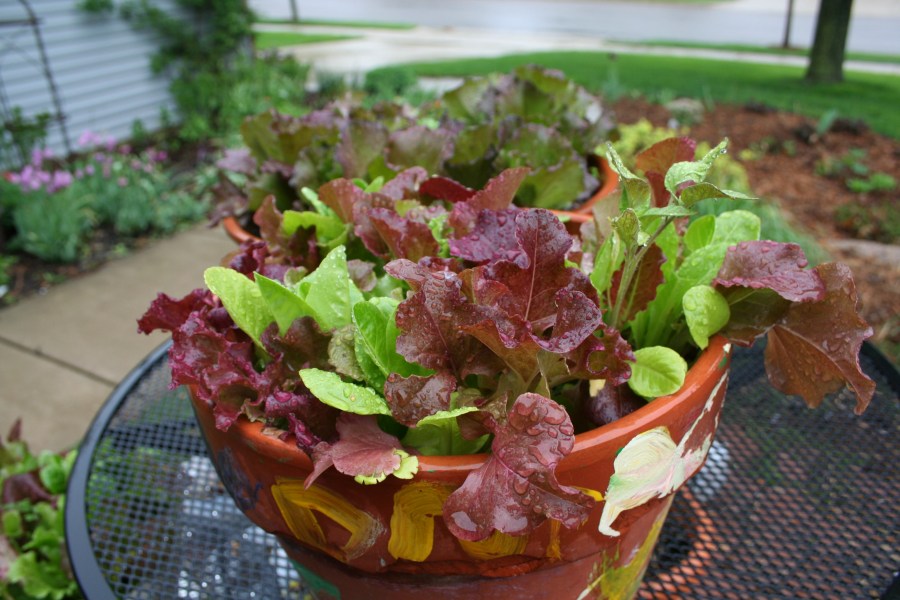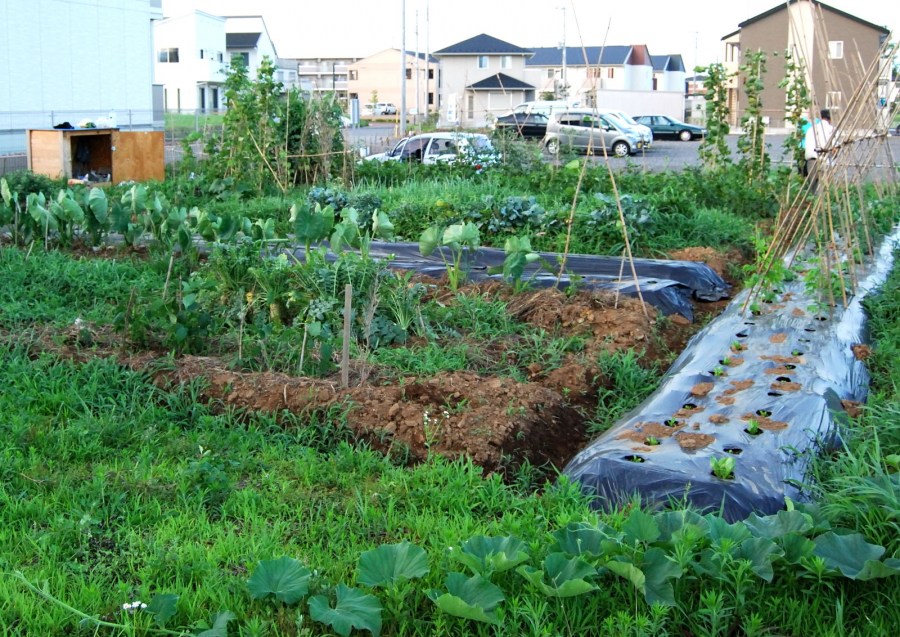Garden at the cottage - planning, zoning and ideas for competent organization of the place (105 photos)
How to grow a good crop of vegetables, while spending a minimum of effort and time? And after all, I want the garden to please the eye, so that continuous rows, stripes of beds are not boring. But it can be turned into a flower garden, arrange a garden on the principle of a flower garden. And for vegetables, you can build flower beds, mixborders, discounts, etc., you only need desire and imagination.
The garden may well look aesthetically pleasing, beautiful, original. Having set a goal to create a flower garden for yourself, at the very beginning you only need to spend time and your efforts, and in subsequent years it will only remain to plant, water, clean and rejoice that the plot is beautiful, cozy, that gardening allows you to devote your leisure to others hobbies, meetings with friends, good rest.
This photo of a garden in a summer cottage demonstrates one of the options for a decorative garden, which everyone can create in his own area.
Garden design
A beautiful garden in the country can be separated from the house and the yard by a short hedge. For a lively and useful fence, Japanese quince, cinquefoil, tunberg barberry and admixture, rose hip, hawthorn, black currant, golden, alpine, St. John's wort, gooseberry, and hollow mahonia are quite suitable. These shrubs tolerate a haircut, any original curbs, fences can be formed from them.
Vegetables of different colors can create a whole artistic canvas in the country. Anyone can do it. However, when creating such a flower garden, it is necessary to take into account several factors necessary for the planned garden to bring joy and benefit, to be beautiful and fruitful.
Consider a few tips on the design of the garden at the cottage, which will help you easily and simply achieve excellent results and crops.
Before you begin to directly draw up a plan for the breakdown of garden plots, it should be noted that vegetables need a sunny place, protected from the north winds (you can protect the beds with a taller hedge, and from evergreen shrubs).
It is necessary to leave a place under the compost heap, which can be decorated with herbaceous perennials (sage, lavender, St. John's wort, etc.), undersized shrubs.
The place under the garden should not be located far from the irrigation system. Be sure to observe crop rotation on beautiful beds.
We plan a garden
First you need to determine the composition of the soil on the site, its acidity, composition (sandy, clay, peat, limestone, loam). This is important because, for example, sorrel is loved by sorrel, potatoes, medium acid - like carrots, turnips, pumpkins, root crops, moderate - onions, legumes, cucumbers, and neutral and slightly alkaline - cabbage, beets.
When planning a garden, you should consider how much time you can devote to caring for it. Usually these are eight to nine beds, which can be arranged in the form of geometric shapes, such as a square, a triangle, different rays.
The sun should illuminate one side of them from sunrise, the other at sunset, which is especially important for photophilous vegetables, herbs, i.e. beds are located from north to south. The minimum lighting for plants is from 6 a.m. to 19 p.m.
It’s good if the plot for the garden is out of the blue, but if the territory is uneven, it’s better to take the southern or southeastern, southwestern gentle slopes under it, but the northern ones are absolutely not suitable for this.
We must not forget about the drainage of the beds - good drainage is needed so that the root system of the plants develops and grows stronger, and does not rot from excess moisture, does not suffocate from a lack of oxygen in excessively moist soil.
When planning a garden, one must take into account that the agrotechnology of some crops is completely different from the need for plants in light, humidity, and soil composition. Therefore, zones are planned first, and already zones - into beds. Such planning makes it easy to observe the compatibility of plants with each other, to ensure the correct crop rotation, which will make it possible to get a good crop.
The beds and paths between them should be comfortable and proportionate. The bed should not be too wide - so that from both sides it was possible to freely reach its middle. And the path - so that you can walk along it freely, even better - so that a garden wheelbarrow runs freely along it.
Track
The paths between the beds should not be overgrown with weeds and time-consuming weeding, it is better to cover them. There are various options for equipping paths - sodding from lawn grass resistant to trampling, tiling, gravel, and broken brick.
To prevent weeds from sprouting through them, first you need to lay on the paths a light-transmitting geotextile or ruberoid, and already rubble, gravel, stone chips, and other material on it.
On sale there are various ready-made plates for garden paths - rubber, plastic, or special roll coverings. Another option is a cover made of caps from plastic bottles, which can also serve as a massage mat.
Beds
Different types of beds are made for a decorative garden: tall, vertical, wall, bed-boxes, pyramid-beds, etc. This is especially valuable and practical if the plot is small and you want to grow many different vegetable crops.
High beds - created for almost one season, mainly for gourds, sometimes for potatoes. Compost is reported in them, they are covered with soil from above. In areas where the bear is common, compost is not added, and ridges are raised, adding soil.
The most popular beds are boxes, which, as designer details, can lay out the territory as the soul desires. They are made simply: fences are installed on pre-designated and prepared places, then drainage material is poured into such a box (crushed stone, brick chips, pebbles, gravel, expanded clay, etc.), a small layer of sand is poured on it, then the prepared soil is already added . The fencing of such beds are boards, slate, plastic sheets.
For a small area and not only another option - a pyramid-bed. It refers to vertical gardening. Most often, pyramids are used for strawberries, but other plants can also be planted in them.
Therefore, the pyramid beds are used not only with practical benefits, but also as an element of landscape design. It can be made from any improvised materials, any size and shape. Used, for example, plastic bottles, car tires, metal or plastic pipes, even flower pots.
They make pyramids of wood, plastic. You can make them of different shapes, heights, diameters - as your fantasy tells you and how convenient.
Vertical beds can be wall-mounted, or in the form of a rack, from plastic boxes, from tires, building mesh, wooden or plastic barrels, PVC sewer pipes, plastic bottles, wooden pallets, etc. It is better to fill such beds with ready-made soil, it is better - bought in the store.
But such beds are more suitable for strawberries, herbs, flowers. Their soil quickly dries up and is depleted, because plants have to be fed and watered more often.
Watering
When creating a decorative garden, it is necessary to think through the methods of watering correctly, which is very important especially in dry seasons.
The most popular way is hose spraying. You can use various containers (for example, plastic bottles) that are dug into the soil, from small holes water will seep directly to the roots.
Another way is drip. A pipe with small holes is laid in the box as the box itself is laid, then attached to the main hose or pipe. Drip irrigation saves a lot of time, effort and water consumption. Now in special stores ready-made kits for drip irrigation are sold.
Useful ideas
In order for plants to be comfortable in such beautiful, original beds, to collect good crops, some secret trivia can be used. However, little things help a lot in caring for the garden and growing your favorite plants:
- it is good to add hydrogel to the soil of vertical beds - it will not dry out quickly, but - retain moisture longer
- next to vegetables it is useful to plant marigolds, nasturtium and other neighboring flowers that naturally protect other plants from pests
- if suddenly ants are wound up in the beds, you can plant a celandine bush right in the anthill - the ants will leave
- it’s good to put a net at the bottom of the beds-boxes - moles will not ruin the
- after harvesting vegetables, it is good to immediately sow green manure in the beds
- mustard - quickly gives a green mass, disinfects the soil, eliminates wireworm, feeds with nitrogen, phosphorus, potassium
- rape - structures, loosens the soil, which helps the roots of plants to breathe, increases moisture capacity
- lupine - gives a lot of green mass, enriches the soil with nitrogen, loosens the soil, scares off the roots of May larvae, bear cub and other soil pests
- vetch with oats enrich the soil with nitrogen and potassium
- next to vegetables, you can plant honey plants (white clover, coltsfoot, lunatic, mint, lemon balm, cucumber grass, phacelia) in the beds, which will attract bees, which will provide pollination of flowers to increase the yield
- the bear does not like parsley, marigolds, calendula; by planting them around the perimeter, you can protect your garden
Photo of the garden at the cottage
Chainsaw: 75 photos and basic characteristics of universal tools
What is the size of the ondulin sheet - instructions, with photos, descriptions and useful tips
Petrol trimmer - an overview of the main types of tools (100 photos)
Join the discussion:
